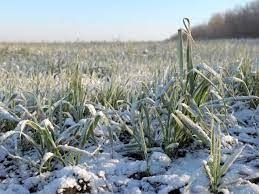Snowfall in the US and drought in Argentina will have the biggest impact on agricultural markets this week

Over the weekend, the storm brought heavy snowfall and frosts to -15…-20 ° C to the Midwest of the United States and the Central and Southern Plains, which led to the delay of more than 1,000 flights and the cancellation of more than 1,400 flights. 62 million people were in the snowstorm zone, but the state of Virginia was the hardest hit, where almost 90,000 residents were left without electricity. The snowfall stopped on Monday, but the severe frosts will persist until the end of the week.
Snow cover protects winter wheat crops from frost and improves soil moisture, but the lack of snow in some western Kansas areas could lead to the loss of some winter crops.
The lack of rainfall in Argentina is negatively affecting the development of soybean and corn crops. According to forecasts, temperatures will soon exceed the norm, which will lead to a decrease in soil moisture in most regions, and only in the south there may be minor precipitation. Such weather could damage corn crops that are in the pollination and filling phases.
In central and northern Brazil, the rainy season is continuing, which favors the development and ripening of soybeans and corn. In some areas, soybean harvesting has begun, but the bulk harvest will be in February. In the south of the country, precipitation is lower and the intensity of rains is not expected to increase in the near future, which will negatively affect soybean ripening in Mato Grosso do Sul and corn pollination in Rio Grande do Sul.
Heavy rain continues across Europe , with France, Germany and the UK already experiencing excessive rainfall. This week, rain fronts will spread eastwards across the region, where dry weather remains.
Dry weather prevails in Ukraine , but the absence of severe frosts slows down the loss of soil moisture. Scattered precipitation and wet snow are expected throughout the week, which, against the background of positive temperatures, will allow replenishing moisture reserves. However, significant precipitation is not expected in the eastern and southern regions.


